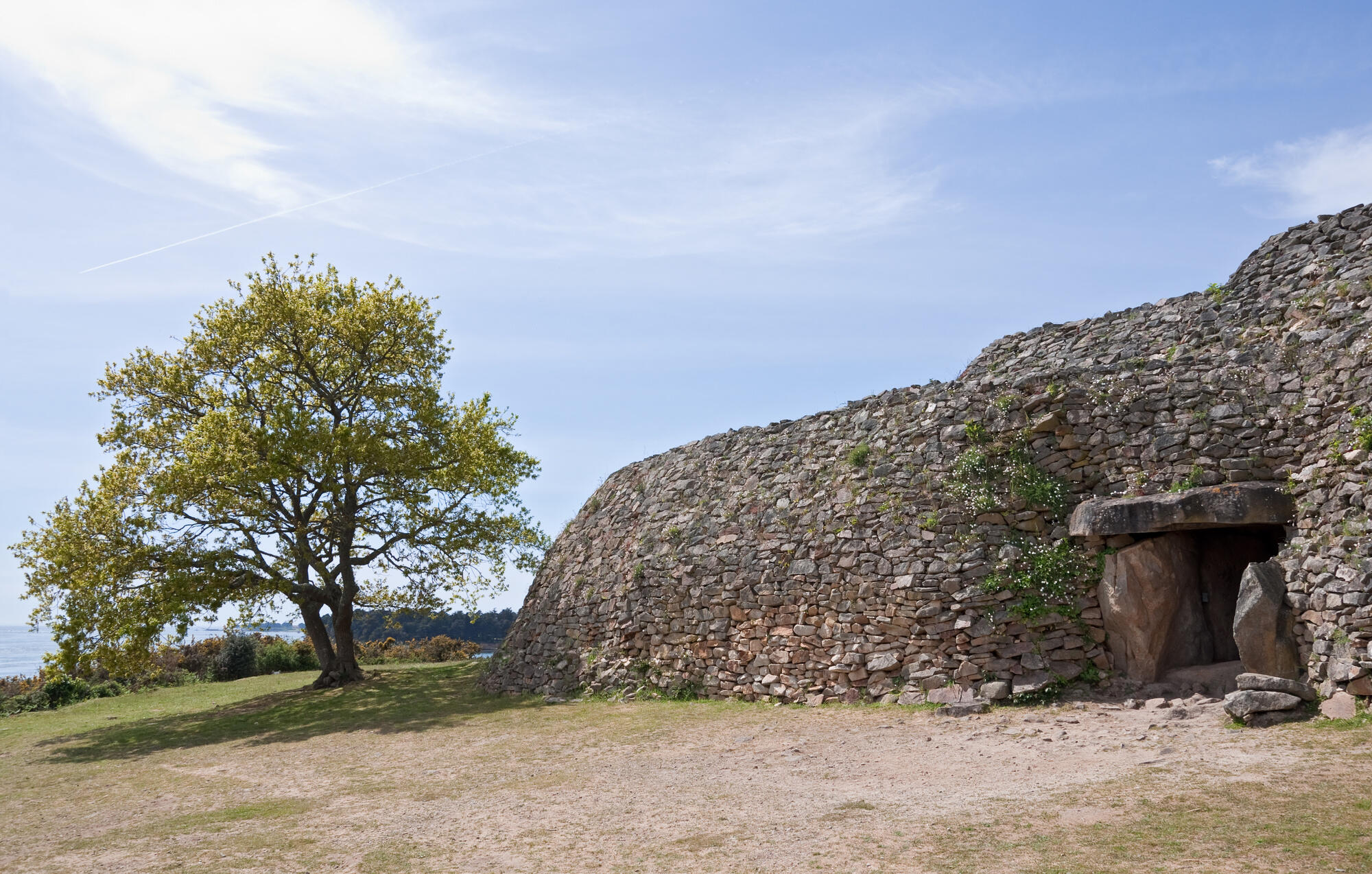- Home
- Discover the megaliths of Morbihan
- Monumentalism
- Civilisations and megaliths
- Introduction
Western European megaliths are traditionally considered to be a phenomenon typical of the Atlantic region and even of the Atlantic coast (in the Breton model, the most ancient monuments are, in fact, almost all located on the coast).
However, a closer look at a general map shows that this rule is not always true, especially if we consider "paramegalithic" monuments such as funeral mounds.
According to recent studies, monumentalism may have appeared on the edges of the "Bandkeramik" Area, as if traditional societies were reacting against the dynamic new farming communities emerging in their well-balanced world.
The origins of monumental tombs
In "Bandkeramik" pottery cultures, the only large buildings were "danubian" long houses made up of wood, wattle and daub. They could be up to several dozen metres in length and four to five metres high. These seem to have been dwelling houses with an utilitarian purpose.
In these cultures, the dead were buried individually in pits clustered together in necropoles.
In France, the first signs of change were found in the "Cerny culture".
During the 2nd quarter of the 5th millennium, a new type of necropolis appeared to the South of the Paris basin (at Orville, for instance). These necropoles are of the cluster type, but with a "slab grave" in the middle of the pits. The stone, which can weigh up to several tons, seems to have been a focus for the funerary activities of the place.
"Passy type" large elongated funerary structures are related to the "Cerny culture". We know various examples of them located in an area comprised between the Yonne department (to the South-East of the Paris basin) and the Calvados department in Normandy. These necropoles, consisting of groups of monuments, had obviously been used over a period of time.
These tombs seem related to the European phenomenon of long barrows which can be found from Poland to the South of France via the British Isles. This phenomenon developed over a period of nearly two thousand years.
At the same time, the tradition of multiple use"dolmenic" tombs was developing. These tombs were commonly used in the West of France and especially in the Morbihan area.
One of the elongated tumulary mounds at Croix-Saint-Pierre (Saint-Just, Ille-et-Vilaine department), with its standing stone circle.

